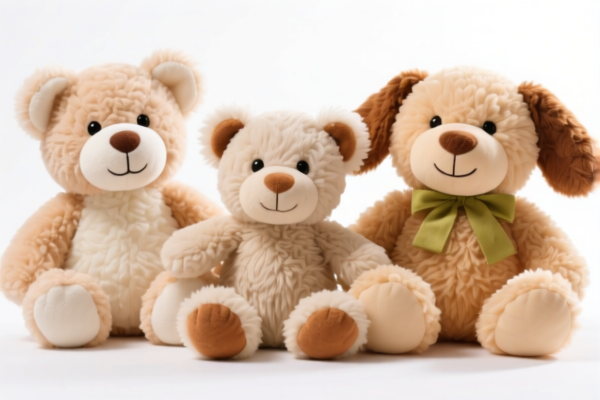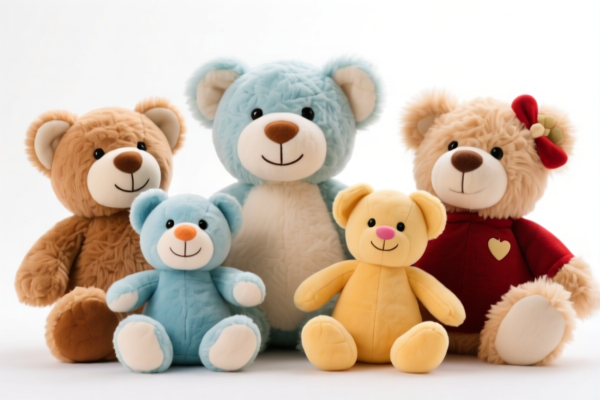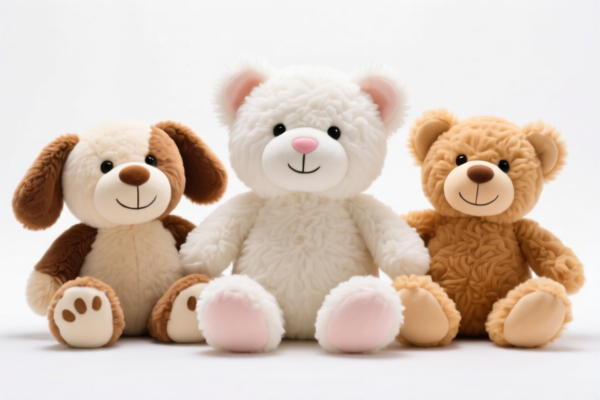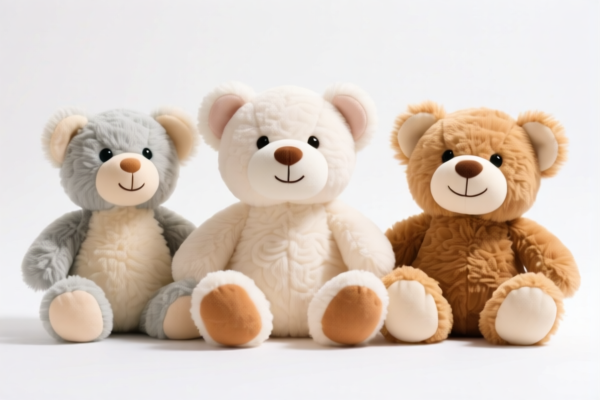| HS Code | Official Doc | Tariff Rate | Origin | Destination | Effective Date |
|---|---|---|---|---|---|
| 9503000090 | Doc | 30.0% | CN | US | 2025-05-12 |
| 9503000071 | Doc | 30.0% | CN | US | 2025-05-12 |
| 6307907500 | Doc | 34.3% | CN | US | 2025-05-12 |
| 6304996040 | Doc | 33.2% | CN | US | 2025-05-12 |
| 6304996020 | Doc | 33.2% | CN | US | 2025-05-12 |




Plush Toys
Plush toys, also known as stuffed toys, stuffed animals, or soft toys, are toys made from textile fabrics and filled with soft materials. They are commonly used as comfort objects, collectibles, and decorative items.
Materials
The primary materials used in plush toy construction include:
- Outer Fabric: Historically cotton and wool, modern plush toys utilize a wide range of fabrics including:
- Plush: A woven or knitted fabric with a long pile, giving a soft, velvety texture. Variations include polyester plush, faux fur, and velboa.
- Cotton: Used for simpler designs or as a lining material.
- Velvet: Offers a luxurious feel, often used for higher-end plush.
- Filling: Provides the plush toy's shape and softness. Common fillings include:
- Polyester Fiberfill: The most common filling due to its affordability, hypoallergenic properties, and washability.
- Cotton: Historically used, less common now due to its tendency to clump.
- Plastic Pellets/Beads: Used for weighted plush or to provide a specific texture.
- Foam: Used for structural support or to create specific shapes.
- Other Materials: Eyes (plastic, glass), noses (plastic, fabric), thread, and sometimes internal structures (wire frames, beans for weight).
Purpose & Function
- Comfort Objects: Plush toys are frequently used by children (and adults) for emotional support and security.
- Companionship: They serve as playmates and encourage imaginative play.
- Collectibles: Certain plush toys, particularly limited editions or those based on popular characters, are highly sought after by collectors.
- Decorative Items: Plush toys are used for room decoration, especially in children’s bedrooms.
- Educational Tools: Animal plush toys can aid in teaching children about different species.
Usage Scenarios
- Child's Play: The primary use case, providing a toy for cuddling, playing, and imaginative scenarios.
- Nursery Decoration: Used as decorative elements in nurseries and bedrooms.
- Gift Giving: Popular gifts for birthdays, holidays, and special occasions.
- Therapeutic Use: Used in play therapy to help children express emotions.
- Adult Collectibles: Displayed and collected by adults.
Common Types
- Teddy Bears: The most iconic type of plush toy, originating in the early 20th century.
- Animal Plush Toys: Representing a wide range of animals, both real and fictional (lions, tigers, dogs, cats, unicorns, etc.).
- Character Plush Toys: Based on popular characters from movies, television shows, books, and video games.
- Baby Plush Toys: Designed specifically for infants, often with soft fabrics and simple designs.
- Beanbag Plush Toys: Filled with plastic pellets, offering a weighted feel.
- Interactive Plush Toys: Incorporate electronic features like sounds, lights, and movement.
- Custom Plush Toys: Made to order based on specific designs or requests.
Plush toys fall under the category of dolls and other toys, encompassing various wheeled toys, dolls’ carriages, and recreational models.
Here are the relevant HS codes based on the provided information:
- 9503000090: This HS code covers Tricycles, scooters, pedal cars and similar wheeled toys; dollsʼ carriages; dolls, other toys; reduced-scale (“scaleˮ) models and similar recreational models, working or not; puzzles of all kinds; parts and accessories thereof. The first two digits '95' indicate Chapter 95, which covers Toys, games and sports equipment. The next four digits '0300' specify Heading 9503, relating to Toys, games and sports equipment; parts and accessories thereof. The final digits '000090' further define this as 'Other'. The total tax rate is 30.0%.
- 9503000071: This HS code also covers Tricycles, scooters, pedal cars and similar wheeled toys; dollsʼ carriages; dolls, other toys; reduced-scale (“scaleˮ) models and similar recreational models, working or not; puzzles of all kinds; parts and accessories thereof, specifically “Childrenʼs productsˮ as defined in 15 U.S.C. § 2052: Other: Labeled or determined by importer as intended for use by persons: Under 3 years of age. The first two digits '95' indicate Chapter 95, which covers Toys, games and sports equipment. The next four digits '0300' specify Heading 9503, relating to Toys, games and sports equipment. The final digits '000071' further define this as 'Other' for children's products under 3 years of age. The total tax rate is 30.0%.
Regarding HS code 9503000071, please note that the goods are specifically defined as “Childrenʼs productsˮ as defined in 15 U.S.C. § 2052 and are intended for use by persons under 3 years of age. Importers need to label or determine the intended age group of the products.
Customer Reviews
No reviews yet.